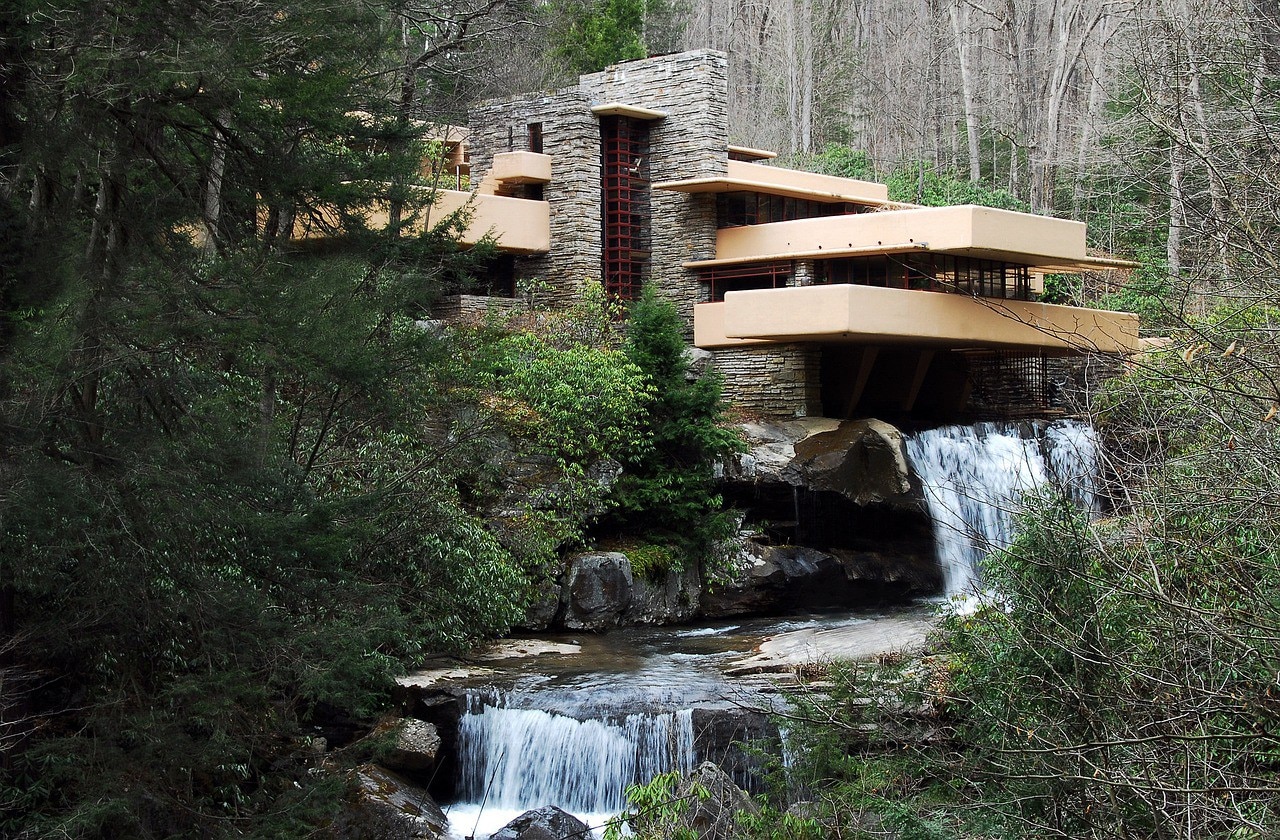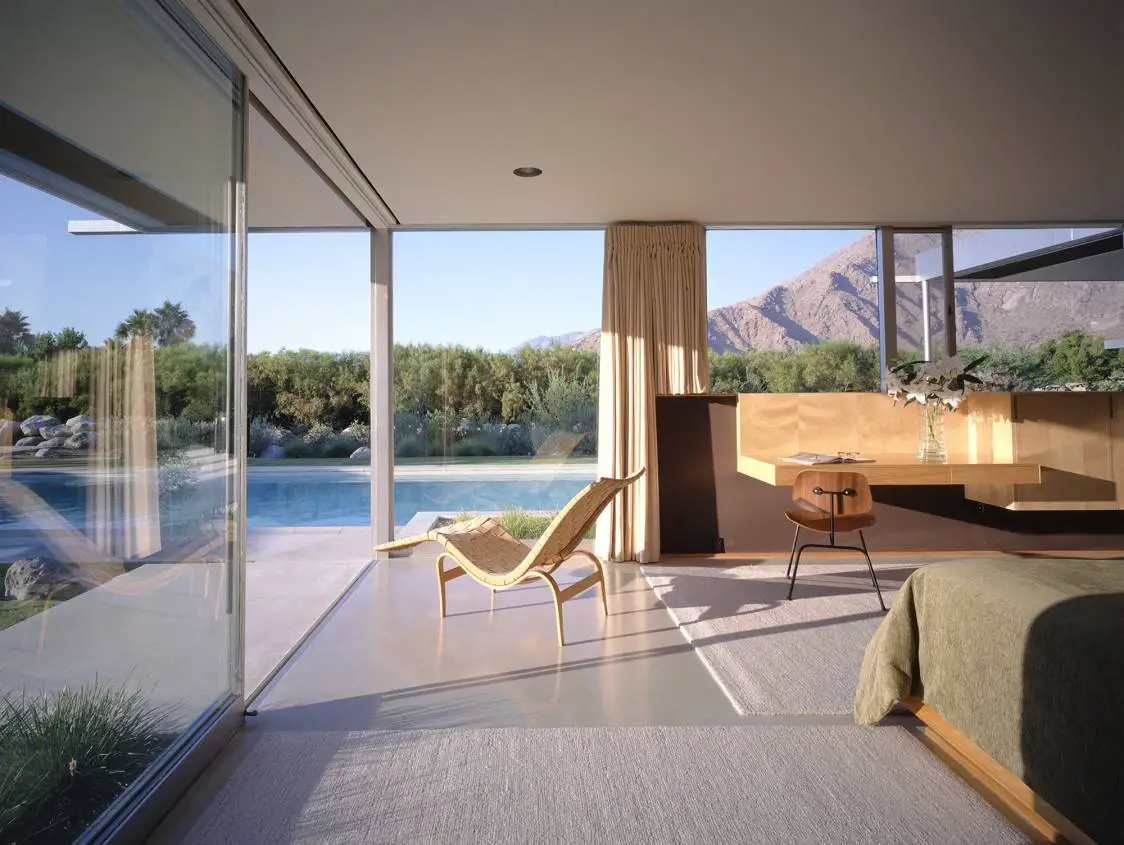Table Of Content
- Easily Contact Trusted Architects and Building Designers
- Wall Street rises to start a week full of earnings reports and a Fed meeting
- Lonely Planet's must-see attractions
- Find Architects and Building Designers to Help Get the Job Done
- Modernist architectural marvel made famous by Slim Aarons for sale for $25m

Fusing glass, steel, and stone, "it is an architectural marvel that helped define the modernist aesthetic," says Gerard Bisignano, partner at Vista Sotheby’s International Realty, who is handling the sale of the 3,162-square-foot home. Edgar J. Kaufmann Sr. (1885–1955) and Liliane Kaufmann (1889–1952), Neutra’s clients, had been patrons of modern art and architecture for many years, mainly in the Midwest, where they owned a department store in Pittsburgh. Until they commissioned the Desert House, the Kaufmanns had been loyal patrons of Frank Lloyd Wright, who had designed an office for E. Kaufmann inside the department store (now at the Victoria and Albert Museum in London) and Fallingwater near Mill Run, Pennsylvania, both completed in 1937.
Easily Contact Trusted Architects and Building Designers
After the crowd dispersed, Beth (who is devoted to an informed public) spontaneously invited the few of us who lingered for a private tour. The tour was fascinating in its detail, but Beth's personal recollections left the most lasting impression. Constructed in 1946, this residence was designed for Edgar J. Kaufmann, a discerning client known for patronizing exceptional architectural works, including Frank Lloyd Wright’s Fallingwater.
Wall Street rises to start a week full of earnings reports and a Fed meeting
The gloriette is accessed from an outdoor flight of stairs that touches down in the central courtyard. The central hub of the pinwheel plan is the living area to the right of the entrance hallway. Floor-to-ceiling sliding glass panes along the right side and the far end fill the room with abundant light, unless the curtains are pulled, and, depending on the weather, open it to the outdoor swimming pool. Forming the center of the room is a fireplace set into a wall, as well as an adjacent sofa. Behind the fireplace a passageway leads along another full-height glass wall to the eastern wing, which accommodates a master bedroom with bathroom, a dressing area, and a small study or den. A covered, outdoor walkway leads from the enclosed living area along a low water channel, or lily pond, to two guest bedrooms in the northern wing.
Lonely Planet's must-see attractions
Through its thoughtful design and integration with the landscape, the Kaufmann House exemplifies Neutra’s ability to create environments that reflect their owners’ personalities and are responsive to their natural surroundings. The house’s swimming pool is one of the most iconic and recognizable aspects of the Kaufmann House; however, it is not solely a photographic gem or simply a recreational feature. The swimming pool creates a compositional balance of the overall design of the house.
The Iconic Slim Aarons 'Poolside Gossip' Home in Palm Springs Sells for Record Sum - Architectural Digest
The Iconic Slim Aarons 'Poolside Gossip' Home in Palm Springs Sells for Record Sum.
Posted: Thu, 05 May 2022 07:00:00 GMT [source]
A PROFESSIONAL, LICENSED AND INSURED CALIFORNIA ARCHITECTURAL AND INTERIOR DESIGN CORPORATION
Later in his career, Richard Neutra designed a series of elegant pavilion-style homes composed of layered horizontal planes. With extensive porches and patios, the homes appeared to merge with the surrounding landscape. The Kaufmann Desert House (1946 to 1947) and the Tremaine House (1947 to 48) are important examples of Neutra's pavilion houses. Above all, Neutra has inspired lasting devotion in the people who have made his homes their own.
His buildings are seen virtually as the apotheosis of Modernism’s International Style, with their skeletal steel frames and open plans. Yet Neutra was also known for catering sensitively to the needs of his clients, so that their houses would be not only functional but would also nurture their owners psychologically. Designed by local modernist William F. Cody, the Linsk addition was compatible and relatively seamless, but removed the glass corridor to the master bedroom and drastically reduced the amount of light to the interior. Modernist furnishings selected by Neutra were replaced with those chosen by prominent Palm Springs interior designer Arthur Elrod.
Join the Lonely Planet community of travelers
Even designed with right angles, the forms of the house are very smooth; yet the severe winds of northeast Palm Springs still blow everything they can get a hold of, despite improvements to the walls and blinds. The south wing connects to the public sphere and includes a marquee and two long covered walkways. These walkways are separated by a huge stone wall to give entry to the services by one side and the house on the other. The east wing is connected with the living space of the north wing through a gallery that houses a bedroom suite. Although one wing of the house sits on an east-west axis, the other sits perpendicular or to the cardinal directions to expand the areas of residence. As in his own home, Neutra skillfully dodged the ban on building a second height, eliminating the walls of the roundabout, except for the chimney and the vertical sheets of aluminum.
Without the original plans for the house, the Harrises dug through the Neutra archives at the University of California, Los Angeles, looking at hundreds of Neutra’s sketches of details for the house. They persuaded Mr. Shulman to let them examine dozens of never-printed photographs of the home’s interior, and found other documents in the architectural collections at Columbia University. In 1992 Beth Harris, an architectural tourist of a sort, scaled a fence one afternoon to peek at the famous house while her husband discovered a for-sale sign in an overgrown hedge. But Dr. Harris, who worked toward her doctorate in architectural history while restoring the Kaufmann House, said she believed an auction would further the preservationist cause.
The decision to build the bedrooms and courtyards a spiral, reveals a specific social order. An extreme privacy is guaranteed both to the hosts, as the children, guests, and servants. The only coexistence between them occurs in the shaded walkways, terraces and courtyards. Blinds that flank a long dark pool connect the guest wing with the rest of the house. Kauffman visited Taliesin West, the summer study of Wright, located in the middle of Arizona, but was not particularly impressed.
Alternatively, according to the listing agent, "it could easily be made more stylish by converting it to a Spanish style." At this point, Beth and Brent Harris decided to purchase and restore the house. The design of the house is quite simplistic; at the center of the house is the living room and the dining room that is the heart of the house and the family activity. The rest of the house branches out like a pinwheel in each of the cardinal directions. From the center of the house each wing that branches out has its own specific function; however, the most important aspects of the house are oriented east/west while the supporting features are oriented north/south.
The lounge area, shared with the dining room and more or less square, is at the center of the house. The plan in the form of cross guarantees that the four wings get both daylight and good ventilation. The pending sale is bittersweet for the current owners, who said they planned to give a portion of the proceeds to preservation groups.

Born and educated in Europe, Richard Joseph Neutra helped introduced the International Style to America, and also introduced Los Angeles design to Europe. His southern California firm envisioned many office buildings, churches, and cultural centers, but Richard Neutra is best known for his experiments in modern residential architecture. In Germany, I’d look for anything connected to the Bauhaus.” She went on, “I ended up tracking down Ida Kerkovius, who’d been in the Bauhaus weaving department. Mark and Hilary were small children then, and he was excited by the idea of making a house for a family with little kids—he hadn’t done that in years, he said.” This was around 1952. Neutra drew up blueprints and helped the Huebsches buy a plot of land, but they couldn’t afford to begin construction until a full decade later.

No comments:
Post a Comment